Culture of Montenegro
The culture of Montenegro is as pluralistic and diverse as its history and geographical position would suggest. Montenegro's culture has drawn influences mainly from Ancient Rome, Christianity, Islam, the Byzantine Empire, the Ottoman Empire, the Republic of Venice, Austria-Hungary, and Yugoslavia.
| Part of a series on the |
| Culture of Montenegro |
|---|
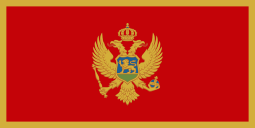 |
| History |
| People |
| Languages |
| Cuisine |
| Festivals |
| Religion |
|
Art |
| Literature |
|
Music and performing arts
|
|
Media
|
| Sport |
|
Monuments |
Values and norms
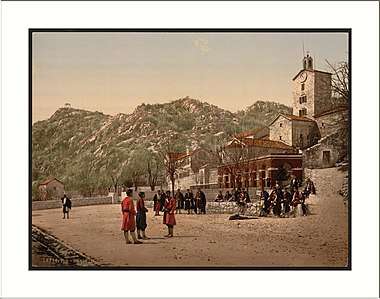
Ethical beliefs and laws
A very important dimension of Montenegrin culture is the ethical ideal of "Čojstvo" (the act of defending somebody from yourself) and "Junaštvo" (the bravery), roughly translated as "Humanity and Courage", an ancient Montenegrin code of honor. Another result of its centuries long warrior history, it is the unwritten code of Chivalry that stipulates that to deserve a true respect of its people, a person has to show virtues of integrity, dignity, humility, self-sacrifice for the just cause, respect for others, and Rectitude along with the bravery. In the old days of battle, it resulted in Montenegrins fighting to the death, as being captured was considered the greatest shame. This code of conduct is still very much ingrained, to greater or lesser extent, in every Montenegrin's ethical beliefs system and it is essential that it be kept in mind in order to truly understand them.
A Montenegrin tradition made into law in Montenegro by King Nikola during his reign, consisting of newly-weds planting an olive tree on their wedding day as a symbol of marriage.
The infamous Montenegrin traditional law of vendetta, known as "Krvna Osveta", where one Montenegrin must take revenge on whoever killed his relative by killing the murderer or one of the murderer's close relatives, similar to the Albanian "Gjakmarrje".
Religion and faith
Montenegrin society is still very patriarchal and conservative. According to the 2011 census, the vast majority of more than 96% of Montenegrin residents declare themselves as members of some religious organization. While Eastern Orthodox Christianity is the dominant religious denomination in Montenegro, there are also sizable numbers of adherents of both Catholic Christianity and Islam. The dominant Church is the Serbian Orthodox Church although traces of a forming Montenegrin Orthodox Church are present.
Traditions and customs
The Slava is exclusive custom of the Serbian Orthodox Church believers, each family has one patron saint that they venerate on their feast day. The Serbian Orthodox Church uses the traditional Julian calendar, as per which Christmas Day (December 25) falls currently on January 7 of the Gregorian calendar, thus the Serbs celebrate Christmas on January 7, shared with the Orthodox churches of Jerusalem, Russia, Georgia, Ukraine and the Greek Old Calendarists.
The badnjak is a tree branch or young tree brought into the house and placed on the fire on the evening of Christmas Eve, a central tradition in Eastern Orthodox Christmas celebrations in Montenegro. The tree from which the badnjak is cut, preferably a young and straight Austrian oak, is ceremonially felled early on the morning of Christmas Eve. The felling, preparation, bringing in, and laying on the fire, are surrounded by elaborate rituals, with many regional variations.
Tradition
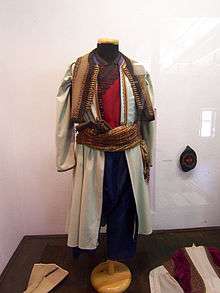
Folk dances
The traditional folk dance is a circle dance called kolo, which is common among Montenegrins, Serbs and Macedonians. It is a collective dance, where a group of people (usually several dozen, at the very least three) hold each other by the hands or around the waist dancing, forming a circle (hence the name), semicircle or spiral. It is called Oro (or the "Eagle dance") in Montenegro. Similar circle dances also exist in other cultures of the region.
Epic songs
Montenegrins' long-standing history of struggle for freedom and independence is invariably linked with strong traditions of oral epic poetry. Traditionally, they are delivered to the audience accompanied by the music produced by a gusle, a one-string instrument played by the story-teller (guslar), who sings or recites the stories of heroes and battles in decasyllabic verse. Historically, these songs have had an immense motivational power over the population. The guslars commanded almost as much respect as the best of warriors, as they were as much the authors, thus history writers, as they were interpreters. Presently, these traditions are somewhat livelier in the northern parts of the country (also shared with people in eastern Herzegovina, western Serbia, and central Dalmatia).
Montenegrin names
There are many Montenegrin names unique to the Montenegrin people which display the distinct culture of the Montenegrins.
For an extensive list see: Montenegrin given names.
Cuisine
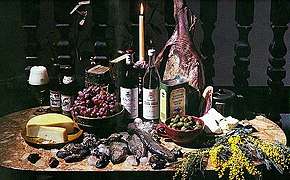
Montenegrin cuisine is a result of Montenegro's geographic position and its long history. The traditional dishes of Montenegro's heartland, and its Adriatic coast have a distinctively Italian flavour which shows in the bread-making style, the way meat is cured and dried, cheese-making, wine and spirits, the soup and stew making style, polenta, stuffed capsicums, meatballs, priganice, japraci, raštan, etc.
The second large influence came from the Levant and Turkey, sarma, musaka, pilav, pita, burek, ćevapi, kebab, Turkish sweets like baklava and tulumba, etc. Hungarian dishes include goulash, satarash, and djuvech, which are also very common. Last but not least, Croatian cuisine made its mark mostly in the desserts department.
Additionally crêpes, doughnuts, jam, myriad types of biscuits and cakes, all make a contribution to the average Montenegrin's waist-line. Vienna-style bread is the most prevalent type of bread in the shops.
Montenegrin cuisine also varies geographically; the cuisine in the coastal area differs from the one in the northern highland region. The coastal area is traditionally a representative of Mediterranean cuisine, with seafood being a common dish.
Architecture
Montenegro has a number of significant cultural and historical sites, including heritage sites from the pre-Romanesque, Gothic and Baroque periods. The Montenegrin coastal region is especially well known for its religious monuments, mostly related to Venetian architecture, including the Cathedral of Saint Tryphon, the basilica of St. Luke (over 800 years), Our Lady of the Rock (Škrpjela), the Savina Monastery, and others. The ancient city of Cattaro (now called Kotor) is listed on the UNESCO World Heritage list, even as a perfect example of the Venetian architecture. The Byzantine influence in architecture, and in religious artwork is especially apparent in the country's interior.
Literature
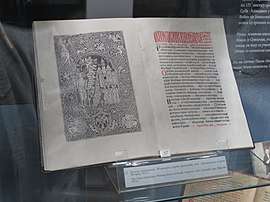 |  |
| Cetinje Octoechos | The Mountain Wreath |
Montenegrin literature refers to the entire (historical and modern) corpus of literature created in Montenegro, written mainly in Montenegrin, Serbian and other related languages spoken in the country.
Characteristics
Although there are works written at least 800 years ago (like the Chronicle of the Priest of Duklja), the most important representatives are writers who lived in 19th and 20th century and wrote mainly in Serbian. The first literary works written in the region are ten centuries old, and the first Montenegrin book was printed five hundreds years ago.
In Venetian Cattaro (actual Kotor) there were a group of writers and poets that introduced Renaissance culture in coastal Montenegro, writing in Latin and Italian: Ludovico Pasquali, Giovanni Bona de Boliris, Giovanni Polizza, Giorgio Bisanti, Girolamo Pima, Timoteo Cisilla, Giovanni Crussala, Giuseppe Bronza and Girolamo Panizzola.
The first state-owned printing press (Printing House of Crnojevići) was located in Cetinje in 1494, where the first South Slavic book was printed the same year (Oktoih).[1] A number of medieval manuscripts, dating from the 13th century, are kept in the Montenegrin monasteries. On the substratum of traditional oral folk epic poetry, authors like Petar II Petrović Njegoš have created their own expression. His epic Gorski Vijenac (The Mountain Wreath), written in the Serbian vernacular, presents the central point of the Montenegrin Serbs culture.
Notable authors
- In 18th and 19th centuries: Petar II Petrović-Njegoš, Andrija Zmajević, Vasilije Petrović-Njegoš, Petar I Petrović-Njegoš, Vuk Vrčević, Stefan Mitrov Ljubiša and Marko Miljanov.
- In 20th century: Mihailo Lalić, Milovan Đilas, Radovan Zogović, Ćamil Sijarić, Miodrag Bulatović, Čedo Vuković, Mirko Kovač, Dragan Radulović, Borislav Pekić and Vito Nikolić.
- Contemporary authors include: Balša Brković, Borislav Jovanović, Jevrem Brković, Andrej Nikolaidis, Tanja Bakić, Bosiljka Pušić and Dragana Kršenković Brković.
Painting and sculpture
The painters from Montenegro gave a great contribution to the affirmation of the Montenegrin culture in the world. Leaving to the other parts of the world (Paris, Belgrade, Zagreb), they took their Montenegrin soul and heritage with them, and passed it down to others through their artworks. The last 15 years saw the opening of the Faculty of the Fine Arts in Cetinje, bringing up a whole new wave of talent. Some of the most prominent painters from Montenegro includes: Milo Milunović, Petar Lubarda, Dado Đurić, Uroš Tošković, Vojo Stanić, Dimitrije Popović, Boris Dragojević and sculptor Risto Stijović.
Music
The music of Montenegro represents a mix of the country's unique musical tradition and Western musical influences. The music of Montenegro has been relatively overlooked, especially in comparison with its literature and visual arts. Nevertheless, the 20th century produced several outstanding composers and interpreters. Specialized Musical High Schools in Kotor and Titograd, were the pillars of the classical music education, the latter being upgraded to the rank of Academy in the last decade of the 20th century. Particular attention is given to Choir and Chamber music. In addition, a professional orchestra is maintained by a national TV in Podgorica.
Historical overview
In the 10th and 11th centuries a composer of religious chants (Jovan of Duklja) was the oldest composer known from the Adriatic coast. At the end of the 12th century a script was made, now called Ljetopis Popa Dukljanina, which described the secular use of musical instruments. Seven liturgies from the 15th century, written by a Venetian publisher L.A. Giunta, have been saved in a St. Clara monastery in Kotor. In those centuries the typical music "venetian style" was introduced to coastal Montenegro (then called Albania Veneta).
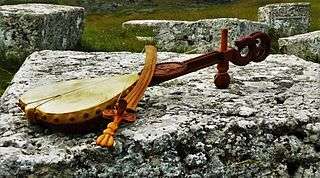
Religious music development was sparked in the 19th century, when a Catholic singing academy was opened in Kotor. Also, until the musical renaissance of the 20th century, Montenegrin music was mainly based on the simple traditional instrument, the gusle.[2] The oldest singing society, named "Jedinstvo" was formed in Kotor in 1839. In 1870 in Cetinje, the first Montenegrin Army Music started being formed—although not many people applied for the orchestra, because being a soldier was much more valued in Montenegrin society than being a musician. Many scholars believe that the biggest contribution to Montenegrin music was the one from the Italian composer who spent the most part of his life in these areas: Dionisio de Sarno San Giorgio.
With his "Balkan Empress" – inspired by the work of King Nikola, got all the praises of Italian critique in the second half of the 19th century.[3] The first music school in Montenegro was founded in 1934 in Cetinje.
Traditional music
Traditional music heritage is somewhat different in different parts of Montenegro. In traditional music, different styles can be noticed in the Gulf of Kotor area, Old Montenegro and Sanjak regions. Old Montenegro traditional music is based around the traditional instrument, the gusle. The music is mainly vocal, or instrumental-vocal. Many songs are adapted from the epics, and are based on the events and tales from Montenegrin tradition.
Classical music
Due to the country's turbulent history, filled with defensive wars and constant fighting for freedom, the development of culture, especially music, was a secondary interest for Montenegrins. The first notable Montenegrin composer was Jovan Ivanišević (1860–1889). He composed piano miniatures, orchestra, solo and chorus songs that were performed even in Prague. He died when he was only 29 years old. In the 19th century, there were also many operas with librettos inspired by Montenegro and its culture, like the famous "Balkan Empress".[4] Other prominent 19th-century composers include Aleksa Ivanović and Dragan Milošević, who graduated from Prague music schools.
In the beginning of the 20th century, when music schools were first introduced, and culture started developing faster, Montenegrin music started flourishing. There have been a number of notable classical music composers from Montenegro, especially during the 20th century. In the first half of the century, two musical schools developed: one based in Cetinje, and the other one in Podgorica. An important role in the music development of that time was played by Radio Titograd, which broadcast various music programmes daily, and helped popularise the music. At that time, composers started returning to the roots, introducing many traditional elements in modern compositions. Also, during the 1940s and 1950s, musical schools were opened in Kotor, Podgorica, Cetinje, Tivat, Herceg Novi, Nikšić, Bar, Ulcinj and Berane.
The Argentine composer Mauricio Annunziata, taking possession of the Montenegrin culture, religion and music, produced the cantata Akatist Op. 108, Hymns of Praise to Saint Basil of Ostrog at the Basilica Santa Maria del Popolo in Rome in May 2008, for solo voices, chorus and orchestra, also in version for organ. This concert marked the second anniversary of the Independence of Montenegro and it was held before the entire diplomatic corps accredited to the Holy See and the highest authorities of the Vatican City. The work was hugely successful in the Italian version of the text produced by Dragana Polovič.
Today, Montenegro is known for several award-winning classical guitarists, among them Montenegrin Guitar Duo (Goran Krivokapić and Danijel Cerović) and Miloš Karadaglić.
Popular music in Montenegro
Probably the best known rock band from Montenegro is Perper from Cetinje. Other notable rock bands include DST from Nikšić and Highway, Autogeni Trening, Gospoda Glembajevi and Mikrokozma from capital Podgorica. Rock musicians from Montenegro who were popular throughout the former Yugoslavia include Marinko Pavićević, Miladin Šobić and Rambo Amadeus. While the notable pop singers from Montenegro are Sergej Ćetković, Vanja Radovanović, Slavko Kalezić, Bojan Marović, Knez, Vlado Georgiev, Nina Petković, Andrea Demirović, Stefan Filipović, Nina Žižić, also pop music groups No Name and D mol. There are currently few active rock and pop Festivals in Montenegro, the most notables are Sea Dance Festival, Cetinje Beer Fest, "City Groove" in Podgorica, "Lake" and "Bedem" Fests in Nikšić, and many other summer music festivals.
Hip hop in Montenegro evolved in the mid-1990s, and was popularized mostly thanks to the most famous Montenegrin hip hop group at that time, Monteniggers. Following their popularity, another hip hop artists emerged. Song themes were often humorous commentaries on everyday life. After a few years of stagnation, a new wave of Montenegrin hip hop started emerging through a growing number of hip hop oriented artists and bands, such as Who See from Kotor, Barska Stoka from Bar, Psiho Mistik and Bacili from Nikšić and Džej Džej Okoča and Sivilo from Podgorica. The main problem these artists face is lack of support from record labels, and insufficient funds available for hip hop projects. There are currently few active Hip Hop Festivals in Montenegro, the most famous is "Asfaltiranje".
In late 1980s and 1990s a dance music was popular, mostly thanks to "Elmag radio", which aired those songs. The best known groups are: H2O (from Bar), This Beat, Bass Reflex, Brchko, PG Crew, Maxi Playboy, Koko Kid (from Podgorica), Bianco Nero (Black and White in Italian), Grofovi (from Mojkovac) and many others.
Performing arts
Film
Considering its population of about 600,000 people, Montenegro has produced a number of outstanding film directors and actors including Dušan Vukotić, the first Yugoslav Oscar winner (for the short animated film category in 1961), Veljko Bulajić, and Živko Nikolić, other notable Montenegrin directors and filmmakers include: Krsto Papić, Branko Baletić, Velimir Stojanović, Zdravko Velimirović, Bane Bastać, Predrag Golubović, Krsto Škanata, Milo Đukanović, and perspective filmmakers of new generation Ivan Salatić, Gojko Berkuljan, Marija Perović, Nikola Vukčević, Željko Sošić and Ivona Juka.
In 2013 the Montenegrin film Bad Destiny became the first film from the country to be submitted for the Academy Award for Best Foreign Language Film.[5][6]
Among the most famous actors from Montenegro are: Milutin Karadžić, Mladen Nelević, Milorad Janketić, Žarko Laušević, Miodrag Krivokapić, Branimir Popović, Dejan Čukić, Andrija Milošević, Petar Strugar and Momčilo Otašević.
Theatre
Notable theatres include the Montenegrin National Theatre in Podgorica, the Theatre of Nikšić in Nikšić, and the City Theatre in Podgorica. Montenegrin National Theatre is the only professional theatre and along with the Faculty of Drama, located in Cetinje is responsible for the lion share of the theatre production in the country. During summer months, City Theatre in Budva takes precedence as a stage for performers coming from all corners of former Yugoslavia and the world.
Many scholars believe that the biggest contribution to Montenegrin music in theater was the one from the Italian composer who spent the most part of his life in these areas: including Dionisio de Sarno San Giorgio. With his "Balkan Empress" – inspired by the work of King Nikola, got all the praises of Italian critique in the second half of the 19th century.[7]
Montenegro as a theme in foreign works
- Croatian poet Ivan Mažuranić wrote a Montenegrin-themed epic poem, The Death of Smail-aga Čengić.
- The 2006 James Bond film Casino Royale is partially set in Montenegro.
- The Great Gatsby by F. Scott Fitzgerald, refers to a decoration which Jay Gatsby received for his war efforts.
- Nero Wolfe, Rex Stout's fictional character is born in Montenegro.
Institutions
- Montenegrin Academy of Sciences and Arts
- Matica Crnogorska
- University of Montenegro
- Montenegrin PEN Center
- Ministry of Culture of Montenegro
| Wikimedia Commons has media related to Culture of Montenegro. |
References
- "Montenegro". Britannica Encyclopaedia. Retrieved 2019-03-28.
- Montenegrin gusle
- Works of Dionisio De Sarno San Giorgio, mostly done in Montenegro
- Balkan Empress
- "Film "As pik – loša sudbina" kandidat Crne Gore za nominaciju za Oskara". pobjeda. Archived from the original on 2013-10-29. Retrieved 2013-08-29.
- "Oscars: Serbia Nominates 'Circles' and Montenegro Taps 'Bad Destiny' in Foreign Language Category". Hollywood Reporter. Retrieved 2013-08-31.
- Works of Dionisio De Sarno San Giorgio, mostly done in Montenegro